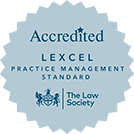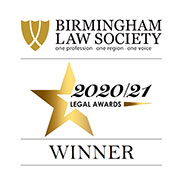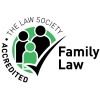Written By .
For nearly 30 years, the law has sought to constrain the ability of secondary victims – those who suffer psychiatric injury not by being directly involved in an incident but by witnessing (or fearing) injury to a primary victim – to make personal injury claims for themselves. However, a recent Court of Appeal decision has provided some welcome clarity and guidance as to when a secondary victim may be able to make a claim for themselves.
The lead case on secondary victims stems from the Hillsborough Disaster (Alcock v Chief Constable of South Yorkshire Police [1992] 1 AC 310) and based on that case and subsequent case law, a secondary victim who sustains psychiatric injury as a result of witnessing death or injury of another must show the following:
1. It must be reasonably foreseeable that a person of “normal fortitude” or “ordinary phlegm” might suffer a recognised psychiatric injury by shock;
2. There must be a close relationship of love and affection between the primary victim and the secondary victim;
3. The Claimant must be in close proximity in time and space to the relevant event (if there is one) or its immediate aftermath; and
4. The psychiatric injury must be caused by – and result from – a “sudden and unexpected shock”. It must be caused by seeing or hearing the relevant incident or its immediate aftermath.
Over the years, the courts have strictly interpreted these “control mechanisms” with the aim of limiting the numbers of claims that can arise from a single incident, and ensuring that only those with correct legal standing can claim, and there have been many cases in the decades since Alcock which have considered and refined the above controls, with the vast majority being struck out.
In Paul v The Royal Wolverhampton NHS Trust [2020] EWHC 1415 (QB), the test of “proximity” was considered. the two appellants/claimants were the daughters of Mr Paul who suffered a fatal heart attack whilst out walking with them on 26 January 2014. It was alleged that his heart attack would have been prevented but for negligent failure to diagnose heart disease and atherosclerosis 14 months earlier in November 2012. The daughters claimed to have suffered psychiatric injury as a consequence of witnessing their father's fatal collapse and brought claims for damages as "secondary victims". The claim initially failed when the court held that the daughters were not in close proximity in time and space to between the “relevant event” and its aftermath - here, between the negligence 14 months earlier and Mr Paul’s sudden death.
The Court of Appeal, however, took a different approach. Citing previous case law, the judge stated:
“...in a case where the defendant’s negligence results in an “event” giving rise to injury in a primary victim, a secondary victim can claim for psychiatric injury only where it is caused by witnessing that event rather than any subsequent, discrete event which is the consequence of it, however sudden or shocking that subsequent event may be… the [initial judge] was wrong… there was on the facts pleaded only one event: Mr Paul’s collapse from a heart attack on 26 January 2014. On the facts pleaded, it was a sudden event, external to the secondary victims, and it led immediately or very rapidly to Mr Paul’s death. The event would have been horrifying to any close family member who witnessed it, and especially so to children of 12 and 9. The fact that the event occurred 14½ months after the negligent omission which caused it does not, in and of itself, preclude liability. Nor does the fact that it was not an “accident” in the ordinary sense of the word, but rather an event internal to the primary victim. In a case where such an event is the first occasion on which damage is caused, and therefore the first occasion on which it can be said that the cause of action is complete, this does not preclude liability…”
Although each case will be determined on its’ own facts, the law as it presently stands means that secondary victims do not have to be present at the scene of the negligence, nor does the "event" have to be proximate in time to that negligence. The control mechanisms remain the same as they have been for the past 30 years, but the interpretation of those control mechanisms and how they apply to clinical negligence cases of mistakes causing later injury, has helped provide some well needed clarity.
For help on clinical negligence and personal injury matters, please contact a member of the Personal Injury team on 0808 166 8827.










